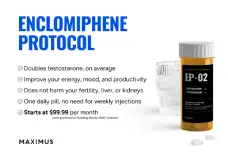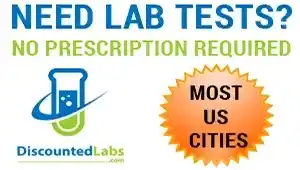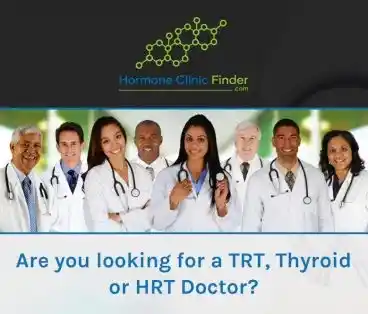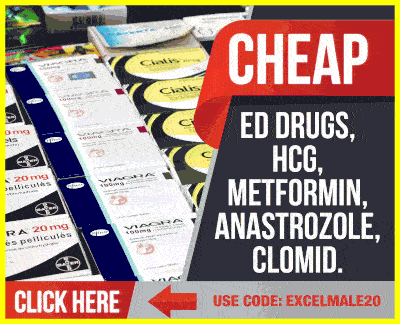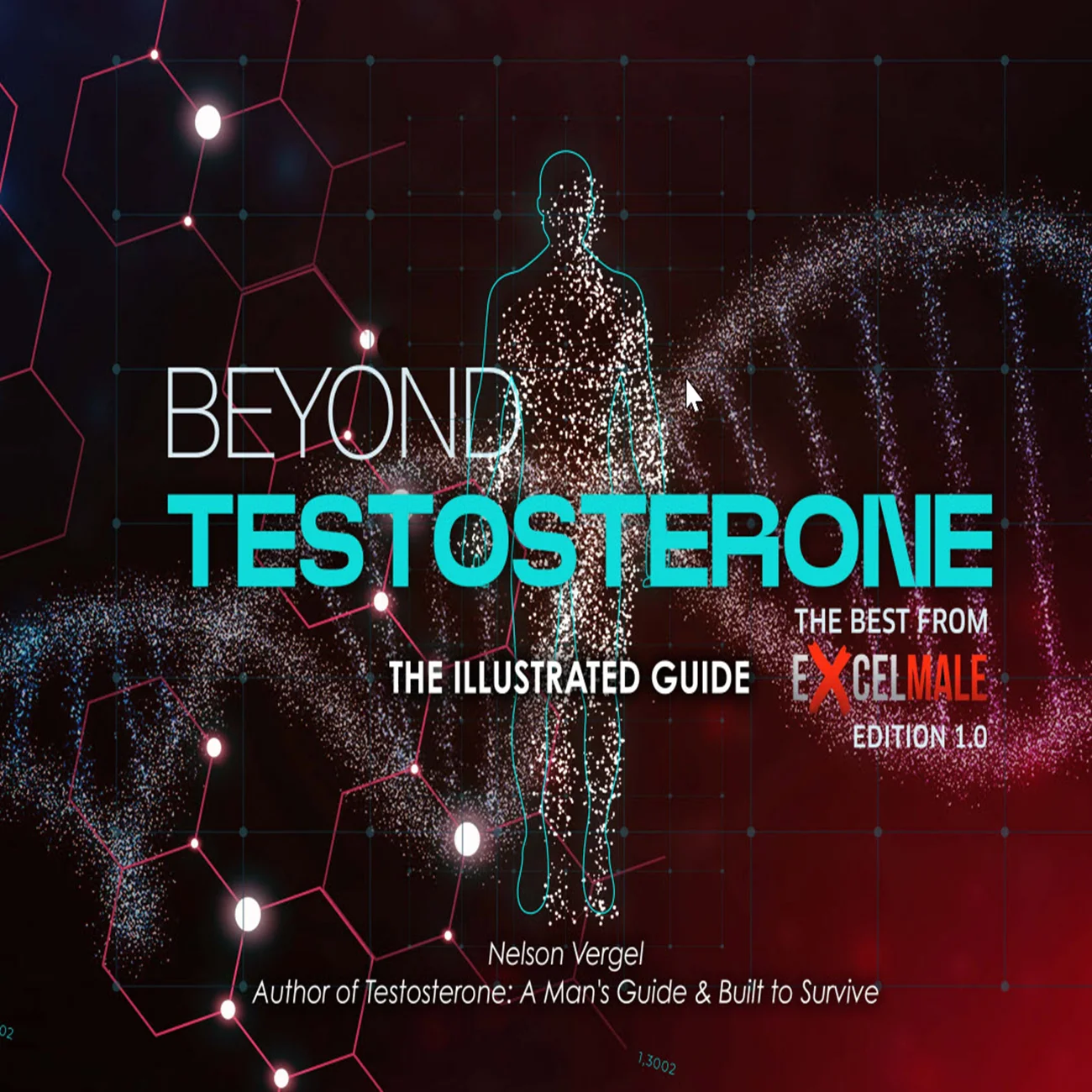Everyone is talking about GLP-1s. As these so-called "miracle drugs" for weight loss exploded in popularity, shortages quickly followed. That’s when compounding pharmacies stepped in, offering lower-cost, customizable versions of these medications. But are patients really getting the same thing—or something more dangerous? Today, I’m joined by Shaun Norian, CEO of Empower Pharmacy, to answer these pressing questions.
Gabrielle: Shaun, welcome back to the podcast. I appreciate your advocacy for patients. To set the stage, you own Empower Pharmacy, the largest compounding pharmacy in the world, making medications more accessible. Recently, I heard in the news that GLP-1s would no longer be available from compounding pharmacies. You told me, “I’m doing great—Eli Lilly just sued me, and I’m ready to take it on.”
Shaun: Absolutely. Someone has to fight for patients. This isn’t a new story: big pharma has always tried to maintain their monopoly by attacking competitors and using their influence on Capitol Hill, with regulators, and in the media. Why? To maintain their monopoly and charge as much as possible for as long as possible.
Gabrielle: How much of the market does Eli Lilly have? And just to clarify, we’re talking about GLP-1s—the hottest, most effective weight loss drugs on the market. Historically, weight loss drugs have included everything from thyroid and DNP (which was banned for toxicity) to amphetamines, “rainbow pills,” fen-phen, orlistat, and more recently, contrave. But nothing has matched the efficacy of GLP-1s like semaglutide and tirzepatide, which can lead to around 15% body weight loss—compared to 3–7% with older drugs.
Shaun: Exactly. Americans have never had access to a medication that enables such significant weight loss with relatively few side effects. When semaglutide was first approved for weight loss, it quickly went on backorder. Even those who could afford it often couldn’t access it. Only about one in seven patients can afford more than $500 a month for these drugs. When compounding pharmacies started offering alternatives, Novo Nordisk and Lilly dropped their prices from $1,000 to around $500 a month—but that’s still unaffordable for most Americans. Meanwhile, Europeans pay about $100 a month for the same drugs.
Gabrielle: Why are U.S. prices so much higher?
Shaun: It’s price fixing. Both companies set high prices and only lowered them when faced with competition from compounding pharmacies. Compounding pharmacies approach things differently: we ask, “What’s the lowest price we can offer to help the most patients?” We focus on volume and patient outcomes, not maximizing profit per patient.
Gabrielle: Compounded medications can be customized—different doses, strengths, or combinations—to minimize side effects and improve outcomes. But I hear from colleagues that compounded GLP-1s are illegal and dangerous. Is that true?
Shaun: Nothing could be further from the truth. Compounding is highly regulated. We manufacture drugs using Good Manufacturing Practices (GMP), the same standards as big pharma. We’re overseen by state boards of pharmacy, the United States Pharmacopeia, and the FDA. Compounding has existed since the beginning of pharmacy, but over the last century, big pharma shifted the market toward mass manufacturing.
Gabrielle: Was that shift necessary? Did it make drugs safer or more standardized?
Shaun: It did standardize medications, but it also led to regulatory capture—where regulators and big pharma become intertwined. Pharma spends hundreds of millions on lobbying each year to protect their interests and stifle competition.
Gabrielle: Pharma argues that bringing a drug to market costs hundreds of millions to billions of dollars, so they deserve to recoup that investment. Is that fair?
Shaun: It’s a fair question, but is it fair to charge Americans ten times more than Europeans? Should seven out of eight patients be unable to access life-changing medications? The purpose of pharma should be to help patients, not just maximize profits.
Gabrielle: The media often reports that the FDA has banned compounded GLP-1s. What’s actually happening?
Shaun: During shortages, compounding pharmacies and FDA-registered outsourcing facilities (503B) were allowed to make these drugs. Now that shortages have eased, compounding pharmacies can’t make exact copies (“essential copies”) of commercial drugs, but they can still make differentiated versions—different strengths, forms, or combinations. The media often omits this nuance, leading to confusion.
Gabrielle: Who regulates compounding pharmacies and outsourcing facilities?
Shaun: Compounding pharmacies are regulated by state boards of pharmacy and must follow USP standards. Outsourcing facilities are FDA-registered and must meet GMP standards, similar to pharmaceutical manufacturers. The FDA has jurisdiction over both.
Gabrielle: Recently, Empower Pharmacy was sued by Eli Lilly and received FDA warning letters. What happened?
Shaun: On April 1, Eli Lilly sued us. The next day, the FDA issued two warning letters to our compounding pharmacy and outsourcing facility—something that’s never happened before. The timing, right after a reduction in FDA staff, raises questions. The warning letters cited issues we’d already addressed or that had never been raised before. It appears coordinated, possibly to intimidate us as the largest player in the space.

Gabrielle: Are monopolies legal in the pharmaceutical industry?
Shaun: Generally, monopolies are illegal in the U.S., but pharma has carved out exceptions. Without competition, prices rise, and patients suffer—healthcare costs are the leading cause of bankruptcy in America.
Gabrielle: What about the safety of compounded medications?
Shaun: Compounding standards have become stricter over time. States inspect pharmacies regularly, and USP standards are rigorous. The vast majority of compounded medications are safe, and compounding is essential for patients who need personalized care.
Gabrielle: What do you want patients and physicians to know?
Shaun: We have options. Providers can decide what’s best for patients—sometimes that’s a compounded medication. The traditional healthcare system is full of middlemen who drive up costs. The rise of telemedicine and functional medicine is creating a parallel system that’s more affordable and accessible.
Gabrielle: Only about 12% of U.S. adults have used a GLP-1 drug, largely due to cost and limited insurance coverage. Why don’t insurers cover these drugs more broadly?
Shaun: Insurers have little leverage—pharma sets the price, and everyone pays the same. Pharma isn’t incentivized to lower costs, and negotiation is restricted.
Gabrielle: Are compounded GLP-1s being shut down?
Shaun: No. Compounding is legal and will remain so. Pharmacies can’t make exact copies of commercial drugs, but they can make differentiated versions. Compounding will likely become more important as traditional drug prices continue to rise.
Gabrielle: What’s next for the industry?
Shaun: Big pharma will keep fighting competitors, but compounding has always adapted. States are starting to restrict outsourcing facilities, but this only reduces patient access and quality. Generics and compounding are crucial for affordable care.
Gabrielle: If you could speak directly to policymakers, what would you say?
Shaun: The solution is competition. Lowering costs and increasing access benefits everyone. America’s strength is innovation and competition—let’s return to those roots.
Gabrielle: How can people vet information about medications?
Shaun: Use AI and deep research tools to verify claims. Be specific in your questions and seek out data from multiple sources. Don’t rely solely on media headlines, especially when pharma is a major advertiser.
Gabrielle: Thank you, Shaun, for your insights and dedication to patient access. This conversation is vital as we navigate one of the most misunderstood issues in modern medicine.
If you found this episode valuable, please share it. For more science-based insights, visit drlion.com. Remember, you are the champion of your own health—stay informed and stay strong.
Gabrielle: Shaun, welcome back to the podcast. I appreciate your advocacy for patients. To set the stage, you own Empower Pharmacy, the largest compounding pharmacy in the world, making medications more accessible. Recently, I heard in the news that GLP-1s would no longer be available from compounding pharmacies. You told me, “I’m doing great—Eli Lilly just sued me, and I’m ready to take it on.”
Shaun: Absolutely. Someone has to fight for patients. This isn’t a new story: big pharma has always tried to maintain their monopoly by attacking competitors and using their influence on Capitol Hill, with regulators, and in the media. Why? To maintain their monopoly and charge as much as possible for as long as possible.
Gabrielle: How much of the market does Eli Lilly have? And just to clarify, we’re talking about GLP-1s—the hottest, most effective weight loss drugs on the market. Historically, weight loss drugs have included everything from thyroid and DNP (which was banned for toxicity) to amphetamines, “rainbow pills,” fen-phen, orlistat, and more recently, contrave. But nothing has matched the efficacy of GLP-1s like semaglutide and tirzepatide, which can lead to around 15% body weight loss—compared to 3–7% with older drugs.
Shaun: Exactly. Americans have never had access to a medication that enables such significant weight loss with relatively few side effects. When semaglutide was first approved for weight loss, it quickly went on backorder. Even those who could afford it often couldn’t access it. Only about one in seven patients can afford more than $500 a month for these drugs. When compounding pharmacies started offering alternatives, Novo Nordisk and Lilly dropped their prices from $1,000 to around $500 a month—but that’s still unaffordable for most Americans. Meanwhile, Europeans pay about $100 a month for the same drugs.
Gabrielle: Why are U.S. prices so much higher?
Shaun: It’s price fixing. Both companies set high prices and only lowered them when faced with competition from compounding pharmacies. Compounding pharmacies approach things differently: we ask, “What’s the lowest price we can offer to help the most patients?” We focus on volume and patient outcomes, not maximizing profit per patient.
Gabrielle: Compounded medications can be customized—different doses, strengths, or combinations—to minimize side effects and improve outcomes. But I hear from colleagues that compounded GLP-1s are illegal and dangerous. Is that true?
Shaun: Nothing could be further from the truth. Compounding is highly regulated. We manufacture drugs using Good Manufacturing Practices (GMP), the same standards as big pharma. We’re overseen by state boards of pharmacy, the United States Pharmacopeia, and the FDA. Compounding has existed since the beginning of pharmacy, but over the last century, big pharma shifted the market toward mass manufacturing.
Gabrielle: Was that shift necessary? Did it make drugs safer or more standardized?
Shaun: It did standardize medications, but it also led to regulatory capture—where regulators and big pharma become intertwined. Pharma spends hundreds of millions on lobbying each year to protect their interests and stifle competition.
Gabrielle: Pharma argues that bringing a drug to market costs hundreds of millions to billions of dollars, so they deserve to recoup that investment. Is that fair?
Shaun: It’s a fair question, but is it fair to charge Americans ten times more than Europeans? Should seven out of eight patients be unable to access life-changing medications? The purpose of pharma should be to help patients, not just maximize profits.
Gabrielle: The media often reports that the FDA has banned compounded GLP-1s. What’s actually happening?
Shaun: During shortages, compounding pharmacies and FDA-registered outsourcing facilities (503B) were allowed to make these drugs. Now that shortages have eased, compounding pharmacies can’t make exact copies (“essential copies”) of commercial drugs, but they can still make differentiated versions—different strengths, forms, or combinations. The media often omits this nuance, leading to confusion.
Gabrielle: Who regulates compounding pharmacies and outsourcing facilities?
Shaun: Compounding pharmacies are regulated by state boards of pharmacy and must follow USP standards. Outsourcing facilities are FDA-registered and must meet GMP standards, similar to pharmaceutical manufacturers. The FDA has jurisdiction over both.
Gabrielle: Recently, Empower Pharmacy was sued by Eli Lilly and received FDA warning letters. What happened?
Shaun: On April 1, Eli Lilly sued us. The next day, the FDA issued two warning letters to our compounding pharmacy and outsourcing facility—something that’s never happened before. The timing, right after a reduction in FDA staff, raises questions. The warning letters cited issues we’d already addressed or that had never been raised before. It appears coordinated, possibly to intimidate us as the largest player in the space.
Gabrielle: Are monopolies legal in the pharmaceutical industry?
Shaun: Generally, monopolies are illegal in the U.S., but pharma has carved out exceptions. Without competition, prices rise, and patients suffer—healthcare costs are the leading cause of bankruptcy in America.
Gabrielle: What about the safety of compounded medications?
Shaun: Compounding standards have become stricter over time. States inspect pharmacies regularly, and USP standards are rigorous. The vast majority of compounded medications are safe, and compounding is essential for patients who need personalized care.
Gabrielle: What do you want patients and physicians to know?
Shaun: We have options. Providers can decide what’s best for patients—sometimes that’s a compounded medication. The traditional healthcare system is full of middlemen who drive up costs. The rise of telemedicine and functional medicine is creating a parallel system that’s more affordable and accessible.
Gabrielle: Only about 12% of U.S. adults have used a GLP-1 drug, largely due to cost and limited insurance coverage. Why don’t insurers cover these drugs more broadly?
Shaun: Insurers have little leverage—pharma sets the price, and everyone pays the same. Pharma isn’t incentivized to lower costs, and negotiation is restricted.
Gabrielle: Are compounded GLP-1s being shut down?
Shaun: No. Compounding is legal and will remain so. Pharmacies can’t make exact copies of commercial drugs, but they can make differentiated versions. Compounding will likely become more important as traditional drug prices continue to rise.
Gabrielle: What’s next for the industry?
Shaun: Big pharma will keep fighting competitors, but compounding has always adapted. States are starting to restrict outsourcing facilities, but this only reduces patient access and quality. Generics and compounding are crucial for affordable care.
Gabrielle: If you could speak directly to policymakers, what would you say?
Shaun: The solution is competition. Lowering costs and increasing access benefits everyone. America’s strength is innovation and competition—let’s return to those roots.
Gabrielle: How can people vet information about medications?
Shaun: Use AI and deep research tools to verify claims. Be specific in your questions and seek out data from multiple sources. Don’t rely solely on media headlines, especially when pharma is a major advertiser.
Gabrielle: Thank you, Shaun, for your insights and dedication to patient access. This conversation is vital as we navigate one of the most misunderstood issues in modern medicine.
If you found this episode valuable, please share it. For more science-based insights, visit drlion.com. Remember, you are the champion of your own health—stay informed and stay strong.
Last edited:




